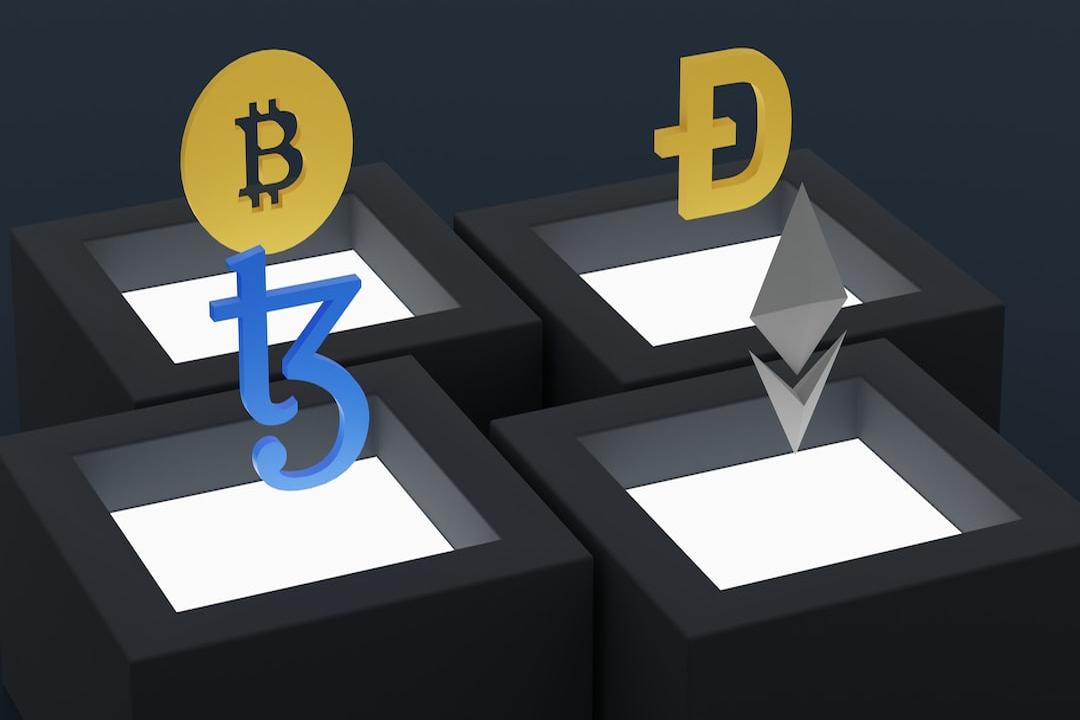P2P Lending [2025]: The Top 7 Investment Platforms, Along with Their Advantages and Disadvantages
Summary:
In this guide, we delve into peer-to-peer (P2P) lending, a revolutionary approach to lending and borrowing that connects individual borrowers and lenders directly. We will explore the top 7 P2P lending platforms of 2025, offering detailed insights into their features, benefits, and potential drawbacks.
Best Crypto Exchange for Intermediate Traders and Investors
Invest in cryptocurrencies and 3,000+ other assets including stocks and precious metals.
0% commission on stocks – buy in bulk or just a fraction from as little as $10. Other fees apply. For more information, visit etoro.com/trading/fees.
Copy top-performing traders in real time, automatically.
eToro USA is registered with FINRA for securities trading.

30+ million Users worldwide
Get Started
eToro is a multi-asset investment platform. The value of your investments may go up or down. Your capital is at risk. Don’t invest unless you’re prepared to lose all the money you invest. This is a high-risk investment and you should not expect to be protected if something goes wrong. Take 2 minutes to learn more.
Peer-to-peer (P2P) lending
Peer-to-peer (P2P) lending, also known as “social” lending, is defined as an act of lending or borrowing money directly from people rather than banks or credit institutions. P2P lending has been around for a long time and practiced among individuals even before banks had been established. Today, modern technology has allowed the lending process to take place online, prompting the rise of P2P lending platforms.
For a long time, banks were the primary loan providers by utilizing the funds made available by their clients (also the lenders) to whom the bank pays a low-interest rate, allowing banks to apply a higher interest rate to the lent money to make a profit.
The benefits of P2P lending are positive to both creditors and recipients: loans are provided faster, more conveniently (online) and more transparently. Mutual lending platforms do not have a fixed interest rate creating a natural competition between investors, that drives the interest rate down.
Another important point is that lenders’ risk is diversified. This means that several to tens or even hundreds of creditors invest in one loan. This reduces the loss in case the borrower’s insolvency because the loss is shared between multiple investors.
Currently, most peer-to-peer lending platforms operate in the UK and the US with the trend coming to Europe and some Asian countries. The very first P2P platform, Zopa, was launched in the UK in 2005. The P2P lending in the UK became so popular, that even the government started to invest.
Benefits for investors:
Peer-to-peer lending platforms are particularly attractive to those who want to get a higher financial return without putting in a lot of work. According to the data of the Eastern European banks, in 2019 the average annual interest rate on consumer loans ranged from 10.63% to 11.58%. However, with enough experience, knowledge and a clear investment strategy, you can earn up to 20% a year profit.
It is not necessary to invest large amounts: you can start investing with as little as 5 EUR. It requires less knowledge and experience than other popular investment methods (such as stocks or bonds). Some of the platforms even have an automatic investment option.
Benefits for borrowers:
Fast loan terms: often, money is transferred to the specified account on the same day.
Opportunity to borrow money cheaper than taking a quick loan.
Larger amounts can be borrowed without collateral.
No down payment is required.
No need to go to the banks, fill out tons of documents and so on. Everything is handled online.
Risk management
When lending money, there is always a risk of losing your investment. There have been cases of insolvent borrowers on mutual lending platforms. It’s not advisable to invest a large amount of money into one loan.
However, if you intend to do so, you should pay extra attention and analyze who you are lending to, which is of course a good practice that should be applied to any loan you invest in. Mutual borrowing companies can provide data on a person’s credit rating and insolvency risk – to inform your decision better.

Portfolio diversification
Diversification is a way of managing overall risk by investing in a variety of investment tools. Let’s say we invest 30% of our portfolio funds in real estate, 20% into corporate stocks and bonds, 10% each to gold, art treasures, foreign currencies, cryptocurrencies and loans.
Diversification can be applied not on your overall portfolio, but also within the P2P platforms themselves. You can achieve diversification by investing as little as possible in as many loans as possible, thus fragmenting the portfolio and reducing the risk of insolvent borrowers. Let’s say you decide to invest 1,000 euros in loans. You can lend the full amount to one person or lend 10 euros to 100 people. In the first case, if the customer is insolvent, you will lose all 1,000 Euros, in the second – only 10 EUR (of course, out of 100 people you may encounter more insolvent customers, but it is still less risky). Generally, the more money you invest in loans, the more borrowers you should have.
Diversifying loans over time. Too often, newbie investors want to invest a whole amount they have dedicated as quickly as possible to maximize their profits in the short term. However, it’s important to understand that borrowers’ solvency is often dependent on the overall economy so there may be more insolvent customers when lending during specific periods of time. Also, there are periods of time when borrowers can face more expenses than usual such as after the biggest holidays of the year. So diversification over time is similar to price averaging strategy when buying stocks, you may miss out on some good opportunities, but the overall risk will be reduced.
Loan diversification between platforms. Different peer-to-peer lending platforms have slightly different business models and, at the same time, manage risk differently. So by dividing your investments between multiple lending platforms, you also reduce the risk of lending your money to insolvent borrowers.
Credit ratings
A loan or credit rating is an indicator that provides investors with information about the borrower’s ability to meet financial obligations. On mutual lending platforms, all clients are divided into categories 3 to 5 and receive an A to E rating:
- A (A*) rating – low risk: The safest to lend, but lowest interest rates.
- B (A) rating – lower risk.
- C (B) rating – medium risk.
- D (C) rating – higher risk.
- E (D) rating – high risk, but when lending to E-rated customers, the highest interest rates (and profits, respectively) can be expected if the borrower will pay his contributions on time.
Note that different platforms have different rating systems: a B rating may mean lower or medium risk, a C rating may indicate both a medium and the highest risk, and so on. Always read the terms of a particular P2P platform and do your own research. The lending rating is based on the borrower’s:
- Income;
- Financial liabilities available at that time;
- Credit history (verifies how the person has fulfilled financial obligations so far);
- Available collateral, etc.
Do not blindly rely on loan ratings alone, do your own due diligence on potential borrowers, sometimes even simple Google Search can reveal a lot. Also, keep your eye on the interest rates, the higher the interest rate, the more careful you have to be.
Investment plan
When investing in loans, you also need to have a clear investment plan also known as an investment strategy. You should make your decisions based on your investment plan, that will protect you from over-investing and will help to keep your overall portfolio diversified. A personal investment plan should be evaluated from time to time and tweaked if needed to improve the results.
Your investment strategy should clearly define either your total or monthly investment amount, desired diversification level and loan management style. Simply put, there are two types loan management styles:
- Active loan management is when you spend a lot of time, actively analyzing, and selecting the loans in which you invest.
- Passive loan management is when you let a platform invest automatically based on criteria pre-determined by you.
It is best to form a long-term investment plan, usually ranging from 24 to 36 months and adhere to it consistently. You can always test both loan management styles at the same time and see which management style gives you the better results over time.
P2P investment also has several disadvantages:
- Illiquidity is one of the main issues in P2P investing.
- Unregulated P2P platforms that do not have financial institution status and/or license.
- Lack of information about the P2P platform founders.
- The procedure of recovering insolvent borrowers’ loans can sometimes be unfavorable for investors.

Only citizens of the European Union
Only citizens of the European Union with a valid personal document (passport or ID card) or valid mobile signature can invest and earn interest via platforms listed below. Here is our pick for the top 7 websites to lend money and earn interest (P2P lending):
- Mintos;
- Neo Finance;
- Bondora;
- PeerBerry;
- EstateGuru;
- Profitus;
- Debitum Network.
Let’s take a closer look at each of these platforms.
Mintos

Mintos is a global market leader for investing in loans for peer-to-peer lending…

Neo Finance

Neo Finance is a leading peer-to-peer lending platform in Lithuania…

Bondora

Bondora is one of the oldest and biggest peer-to-peer (P2P) lending platforms…

PeerBerry

PeerBerry is a peer-to-peer platform that offers opportunities to invest…

EstateGuru

EstateGuru is a market leader in the issuance of property-backed short-term loans…

Profitus

Profitus ranks among the fastest growing and ambitious crowdfunding platforms…

Debitum Network

Debitum Network creates an opportunity for online content creators…

We highly advise to consider the following points before investing in P2P/P2B (Peer-to-Business) platforms:
- Credit market share of P2P platform.
- Platform transparency and results.
- Securing Your Money: Who Are You Lending To?
- What do other investors say?
- Approachability: If you have any questions or doubts…
Conclusion:
To sum up, while peer-to-peer lending platforms can be great investment tools, the great returns do not come without knowledge and experience…
Best Crypto Exchange for Intermediate Traders and Investors
Invest in cryptocurrencies and 3,000+ other assets including stocks and precious metals.
0% commission on stocks – buy in bulk or just a fraction from as little as $10. Other fees apply. For more information, visit etoro.com/trading/fees.
Copy top-performing traders in real time, automatically.
eToro USA is registered with FINRA for securities trading.

30+ million Users worldwide
Get Started
eToro is a multi-asset investment platform…
